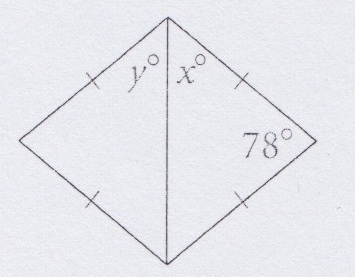Geometry Ch 6.4 - 6.6 Quiz

7 Free Response Questions. 3 True or False Questions. Time Limit: 30 minutes
Questions and Answers
- 1.
Find the values of x and y.
- 2.
Find the value of x and y.
- 3.
Find the value of x and y.
- 4.
Find the value of x.
- 5.
Find the value of x, y and b.
- 6.
A quadrilateral with congruent diagonals is an isosceles trapezoid or rectangle.
- A.
True
- B.
False
Correct Answer
B. FalseExplanation
A quadrilateral with congruent diagonals can be a kite or a square, in addition to an isosceles trapezoid or rectangle. Therefore, the statement that it is only an isosceles trapezoid or rectangle is false.Rate this question:
-
- 7.
A quadrilateral with congruent and perpendicular diagonals is a square.
- A.
True
- B.
False
Correct Answer
B. FalseExplanation
A quadrilateral with congruent and perpendicular diagonals is not necessarily a square. A square is a special type of quadrilateral where all sides are equal in length and all angles are right angles. While a square does have congruent and perpendicular diagonals, there are other quadrilaterals that also have congruent and perpendicular diagonals, such as a rectangle or a rhombus. Therefore, the statement is false.Rate this question:
-
- 8.
Each diagonal of a kite bisects two angles of the kite.
- A.
True
- B.
False
Correct Answer
B. FalseExplanation
This statement is false. Each diagonal of a kite does not bisect two angles of the kite. The diagonals of a kite are perpendicular to each other, but they do not necessarily bisect the angles of the kite.Rate this question:
-
- 9.
Give the coordinates for point A without using any new variables.
- 10.
Give the coordinates for point A without using any new variables.
Quiz Review Timeline +
Our quizzes are rigorously reviewed, monitored and continuously updated by our expert board to maintain accuracy, relevance, and timeliness.
-
Current Version
-
Aug 31, 2023Quiz Edited by
ProProfs Editorial Team -
Dec 07, 2010Quiz Created by
Pchao29








